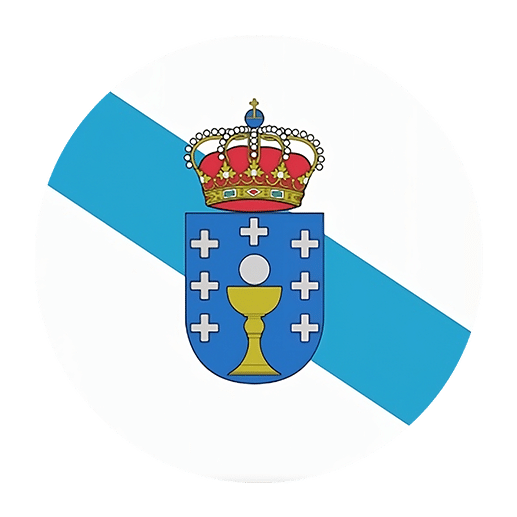Collective nouns are a fascinating aspect of any language, encapsulating the idea of grouping multiple entities into a single term. In Galician, a language spoken in the northwestern region of Spain, collective nouns play an essential role in everyday communication. Understanding these nouns can provide deeper insight into the cultural and social fabric of Galicia, as well as enrich your linguistic skills. This article delves into the intricacies of collective nouns in Galician, offering examples, explanations, and practical applications to help English speakers grasp this unique aspect of the language.
What Are Collective Nouns?
Collective nouns are words that refer to a group of individuals or things as a single entity. In English, common examples include “team,” “family,” “herd,” and “flock.” These nouns help simplify communication by allowing us to refer to multiple items or people with a single term. In Galician, collective nouns operate similarly but come with their own set of rules, structures, and cultural nuances.
The Importance of Collective Nouns in Galician
Galician, like other Romance languages, has a rich vocabulary that includes numerous collective nouns. These nouns are pivotal for several reasons:
1. **Cultural Relevance**: Collective nouns often reflect the social and cultural life of Galicia. For example, terms related to farming, fishing, and family life are prevalent, given the region’s historical and economic background.
2. **Linguistic Efficiency**: Using collective nouns allows speakers to communicate more efficiently. Instead of listing individual items or people, a single collective noun conveys the same meaning concisely.
3. **Grammatical Structure**: Understanding collective nouns aids in mastering Galician grammar, particularly in terms of agreement in number and gender.
Common Collective Nouns in Galician
Let’s explore some of the most commonly used collective nouns in Galician, categorized by different contexts and their English equivalents.
People and Social Groups
1. **Familia**: Like in English, “familia” means “family” and refers to a group of related individuals.
2. **Xente**: This term translates to “people” and is used to describe a group of individuals collectively.
3. **Multitude**: Meaning “crowd,” this noun is used to describe a large group of people gathered together.
Animals
1. **Rebaño**: This term translates to “flock” and is used for a group of sheep.
2. **Manda**: Similar to “herd” in English, “manda” can describe a group of larger animals like cows or horses.
3. **Banco**: Used to describe a “school” of fish, this term is essential in a region with a strong fishing tradition.
Objects and Natural Elements
1. **Ramallada**: This word refers to a “bunch” of branches or twigs.
2. **Racimo**: Similar to “bunch” or “cluster,” this noun is often used for grapes or flowers.
3. **Constelación**: Meaning “constellation,” it refers to a group of stars.
Food and Drink
1. **Cesta**: This term translates to “basket” and is often used to describe a collection of fruits or other food items.
2. **Garrafón**: Used for a large container or “jug” of wine, reflecting the region’s wine culture.
3. **Feixe**: Meaning “bundle” or “bunch,” this noun is commonly used for vegetables or herbs.
Grammar and Usage of Collective Nouns in Galician
Agreement in Number and Gender
In Galician, as in other Romance languages, nouns have gender (masculine or feminine) and number (singular or plural). Collective nouns generally follow these rules, but there are some nuances to be aware of.
1. **Gender Agreement**: The gender of a collective noun can influence the adjectives and articles used with it. For example, “familia” is feminine, so any adjectives describing it must also be in the feminine form: “A familia grande” (The large family).
2. **Number Agreement**: Even though a collective noun represents multiple entities, it is usually treated as singular. For example, “O rebaño é grande” (The flock is large). However, if you refer to multiple groups, the noun becomes plural: “Os rebaños son grandes” (The flocks are large).
Contextual Usage
Understanding the context in which a collective noun is used can significantly affect its meaning. For instance, “xente” (people) can refer to a group in general or a specific group depending on the context: “Hai moita xente na festa” (There are many people at the party) versus “A xente de Galicia é amable” (The people of Galicia are kind).
Idiomatic Expressions
Collective nouns often appear in idiomatic expressions, adding color and depth to the language. For example:
– **”Unha familia unida”**: A united family.
– **”Un rebaño de ovellas”**: A flock of sheep.
– **”Un banco de peixes”**: A school of fish.
These expressions are essential for achieving fluency and understanding the cultural nuances of Galician.
Practical Applications and Exercises
To fully grasp the use of collective nouns in Galician, it’s crucial to practice and apply what you’ve learned. Here are some exercises and practical applications to help you master these nouns.
Translation Exercises
Translate the following sentences from English to Galician, paying close attention to the correct use of collective nouns, gender, and number agreement.
1. The family is large.
2. There is a flock of sheep in the field.
3. The basket is full of fruits.
4. The people of the town are friendly.
5. We saw a school of fish in the ocean.
Sentence Creation
Create sentences in Galician using the following collective nouns. Ensure that your sentences are grammatically correct and make sense contextually.
1. Familia
2. Rebaño
3. Cesta
4. Xente
5. Racimo
Listening and Speaking Practice
Listening and speaking are crucial for mastering any language. Engage with native Galician speakers or listen to Galician media, such as radio, podcasts, or movies, to hear how collective nouns are used in context. Try to mimic the usage in your conversations.
1. **Role Play**: Have a conversation with a friend or language partner where you both use as many collective nouns as possible. For example, one person can play the role of a farmer talking about their animals, while the other can be a market vendor discussing their produce.
2. **Listening Comprehension**: Listen to a short story or news segment in Galician and identify the collective nouns used. Write them down and try to understand the context in which they were used.
Advanced Concepts and Nuances
As you become more comfortable with the basics of collective nouns in Galician, you can explore more advanced concepts and nuances.
Regional Variations
Galician, like any language, has regional dialects and variations. Some collective nouns might differ slightly depending on the area. For example, the term for a group of people might vary between rural and urban settings.
Historical and Literary Usage
Collective nouns have evolved over time, and their usage in historical texts and literature can provide a richer understanding of the language. Reading classic Galician literature or historical documents can offer insights into how these nouns were used in different periods.
Comparative Linguistics
Comparing collective nouns in Galician with those in other Romance languages, such as Spanish, Portuguese, or Italian, can highlight interesting similarities and differences. This comparative approach can deepen your understanding of the linguistic structures and cultural influences.
Conclusion
Collective nouns are a vital component of the Galician language, offering efficiency, cultural insight, and grammatical complexity. By understanding and using these nouns correctly, English speakers can significantly enhance their fluency and appreciation of Galician. Whether you’re a beginner or an advanced learner, mastering collective nouns will undoubtedly enrich your language skills and provide a deeper connection to the vibrant culture of Galicia. Happy learning!

